Table of Contents
Overview – Somatosensory Processing
Somatosensory processing refers to how the nervous system detects, transduces, and interprets sensory information from the body and environment. It involves specialised receptors, peripheral nerves, spinal tracts, thalamic sorting, and cortical integration. Understanding this system is essential for diagnosing neurological conditions, localising lesions, and explaining sensory abnormalities.
Types of Sensation
- Tactile: Touch, vibration, stretch, pressure, itch
- Temperature: Hot, cold
- Pain (Nociception): Damaging or potentially damaging stimuli
- Proprioception: Body position awareness
- Visceral: Internal sensing (e.g. BP, pH, O₂, CO₂)
Sensory Receptors
What Are They?
- Specialised nerve endings that monitor and respond to external and internal environments.
Classification of Receptors:
1. By Physical Location
- Exteroceptors – Skin; respond to external stimuli
- Interoceptors – Viscera; respond to internal environment
- Proprioceptors – Muscles, bones, tendons
2. By Stimulus Type
- Mechanoreceptors – Pressure, stretch
- Thermoreceptors – Temperature
- Nociceptors – Pain/damage
- Chemoreceptors – Chemicals (e.g. pH, CO₂)
- Photoreceptors – Light (vision)
3. By Structural Complexity
- Simple – Free nerve endings (pain, temperature)
- Complex – Specialised structures (e.g. Pacinian corpuscles for pressure)
Why are pain receptors simple? → Pain is a fundamental survival mechanism that has not needed structural evolution.

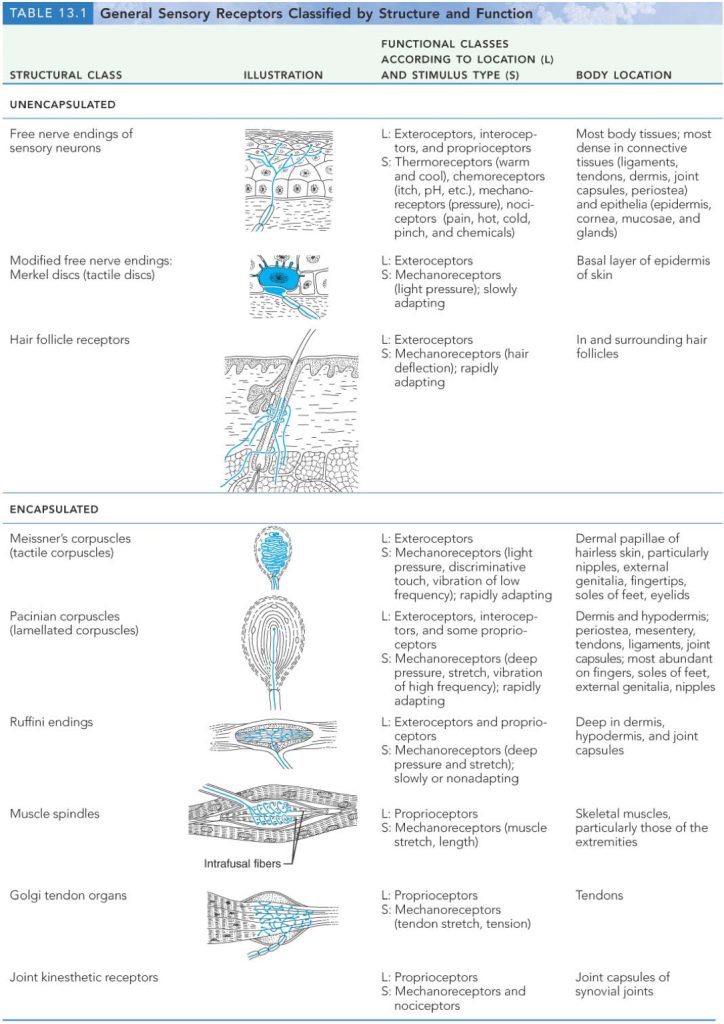
Sensory Transduction
- Receptors convert stimuli into electrical signals (graded potentials)
- If the receptor potential reaches threshold → triggers a generator potential (action potential)
- Result: Neuronal firing along sensory pathway
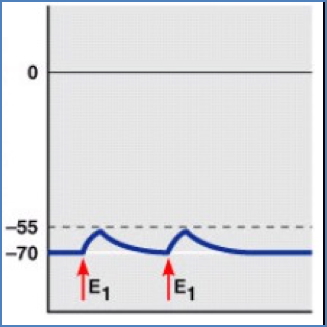
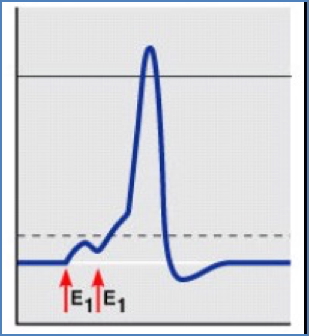
Receptor Activity Patterns
Tonic Receptors
- Continuously active
- E.g. Proprioceptors
Phasic Receptors
- Activate on environmental change
- E.g. Thermoreceptors
Adaptation Speed
- Rapidly Adapting Receptors (RARs): Stop firing quickly (e.g. touch)
- Slowly Adapting Receptors (SARs): Maintain response (e.g. muscle stretch)
Receptive Fields
- Definition: Area monitored by a single receptor
- Large fields: Low density → poor localisation (e.g. back)
- Small fields: High density → precise localisation (e.g. fingertips)
- Key for 2-point discrimination
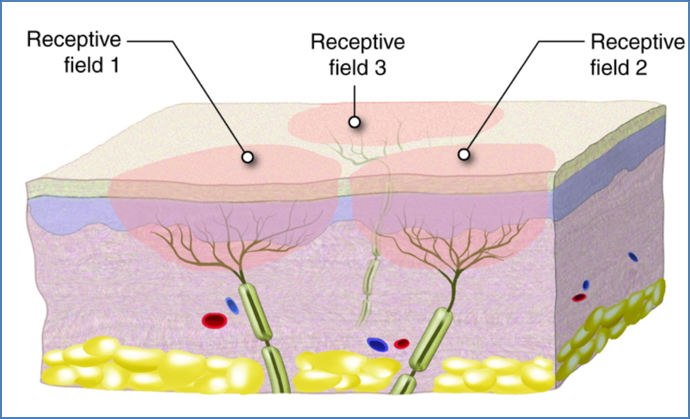
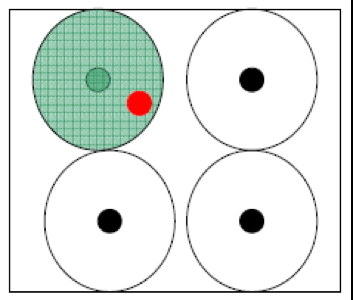
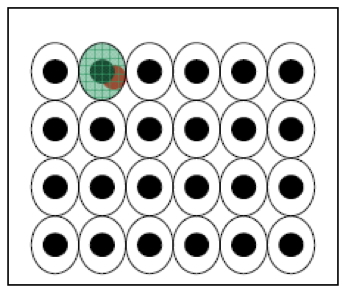
Conduction Speed of Sensory Fibres
- Determined by axon diameter and myelination
- Large + Myelinated = Fast (e.g. proprioception)
- Small + Unmyelinated = Slow (e.g. dull pain)
Pain fibres:
- Fast – Sharp initial pain
- Slow – Delayed dull ache
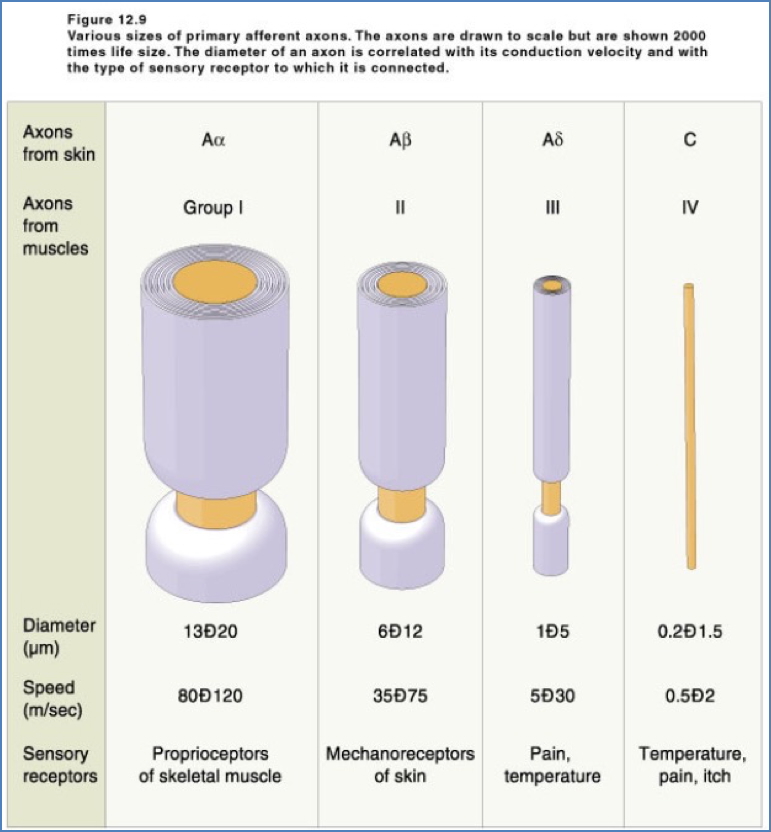
Thalamic Processing
- Sensory signals enter CNS and are routed to the thalamus
- Thalamus acts as a sorting station
- Directs impulses based on origin and sensation type
- Sends information to appropriate cortical areas:
- Primary motor cortex – voluntary movement
- Language centres – vocalisation
- Hypothalamus & brainstem – visceral/autonomic responses

Functional Sensory Brain Areas
- Primary Visual Cortex – Sight
- Primary Auditory Cortex – Sound localisation and pitch
- Primary Gustatory Area – Taste
- Primary Olfactory Area – Smell
- Primary Motor Cortex – Skilled voluntary movement
- Premotor Cortex – Learned motor patterns
- Primary Somatosensory Cortex – Touch, pressure, proprioception
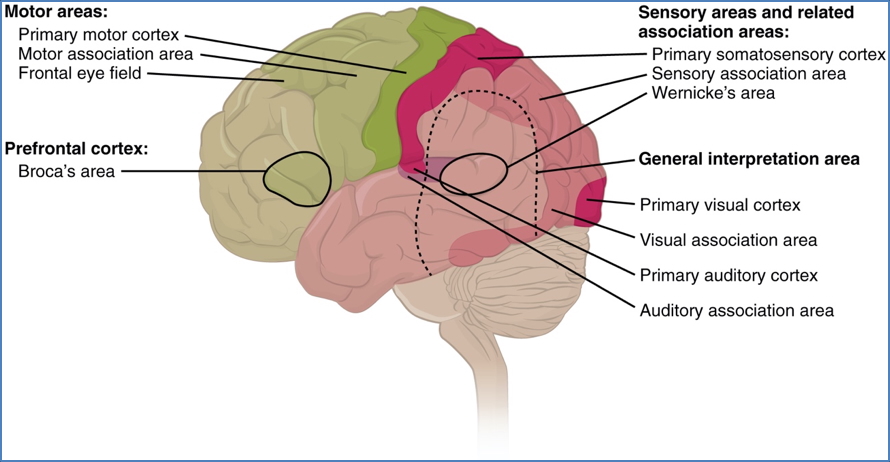
Somatosensory Cortex
- Detects and interprets somatic sensations
- Identifies qualities (texture, shape, size)
- Enables conscious awareness of stimuli
- Somatotopy: Mapped to specific body parts
- Areas with high receptor density occupy larger cortical space (e.g. lips, hands)

Somatosensory Association Area
- Integrates input from the primary somatosensory cortex
- Interprets meaning, context, and memory
- Links past experiences to current sensations
- Guides appropriate response/action
Summary – Somatosensory Processing
Somatosensory processing integrates a wide range of receptor types and central processing centres to interpret the body’s internal and external environments. From skin to cortex, the system detects and refines sensory information into perception and appropriate responses. For a broader context, see our Nervous System Overview page.